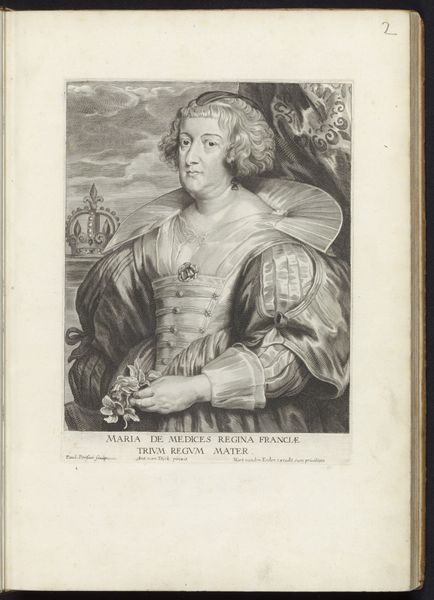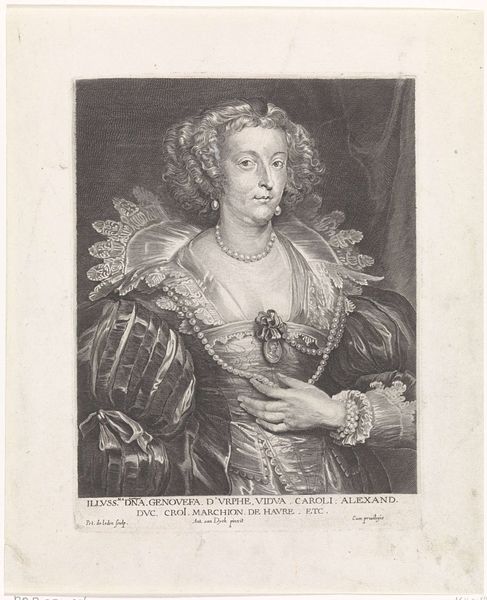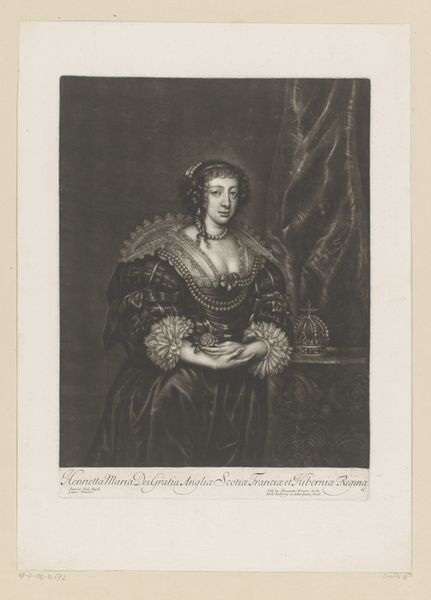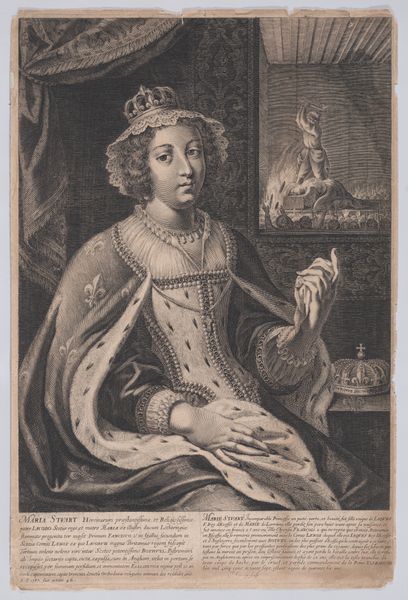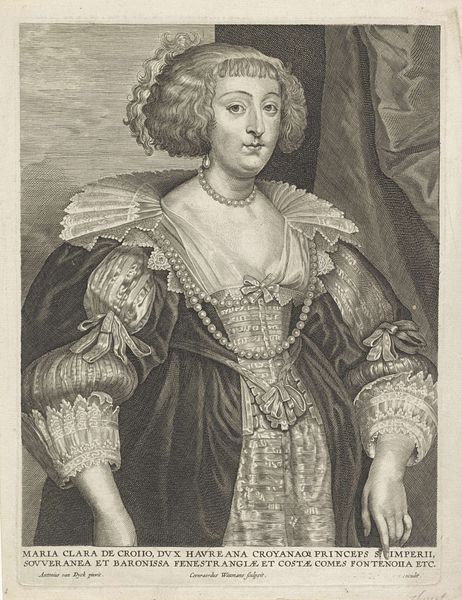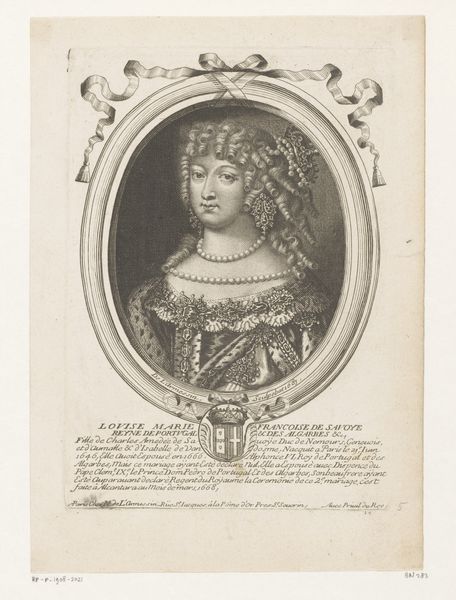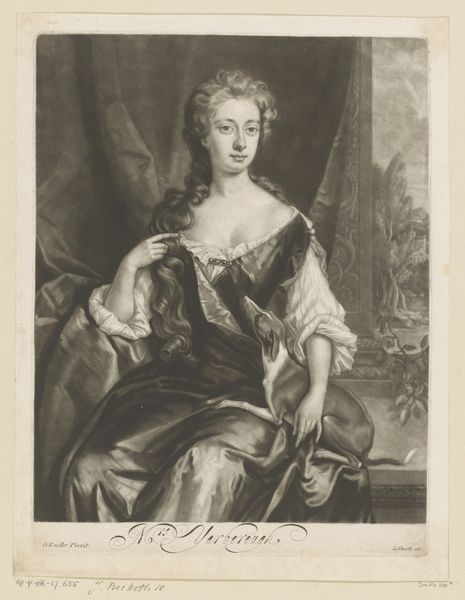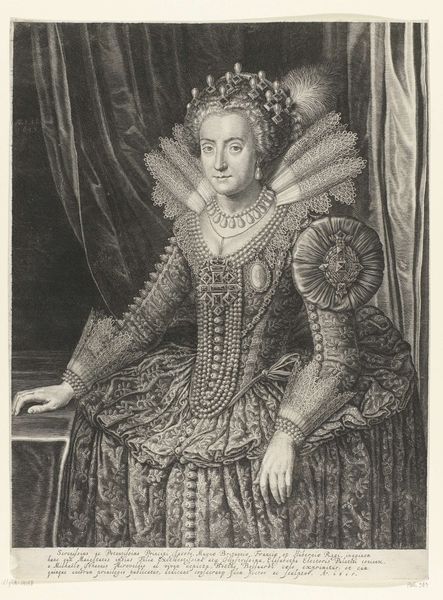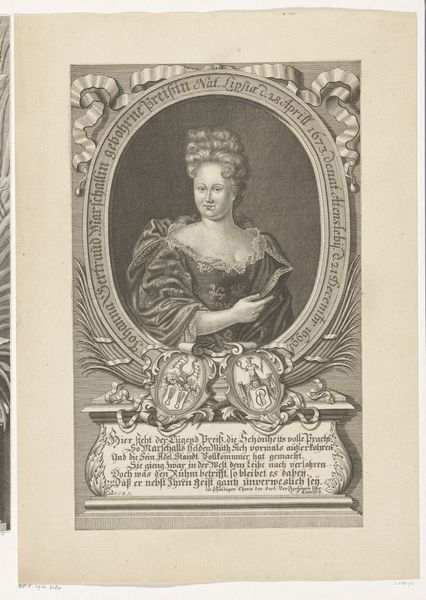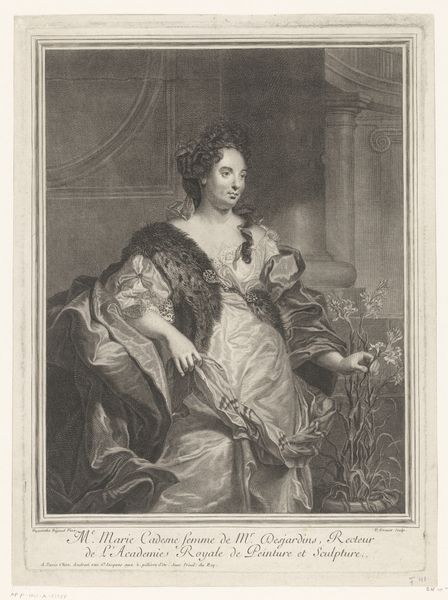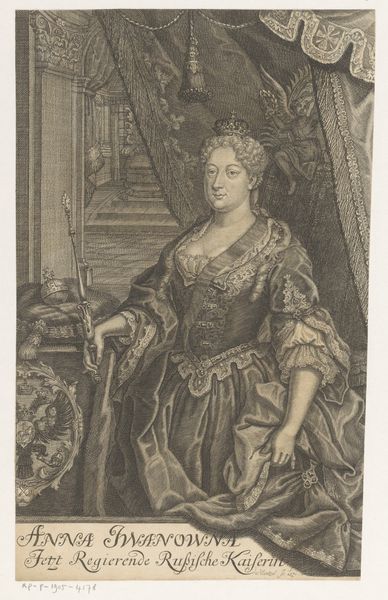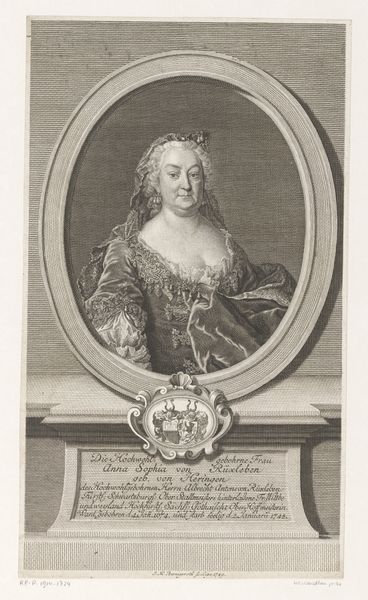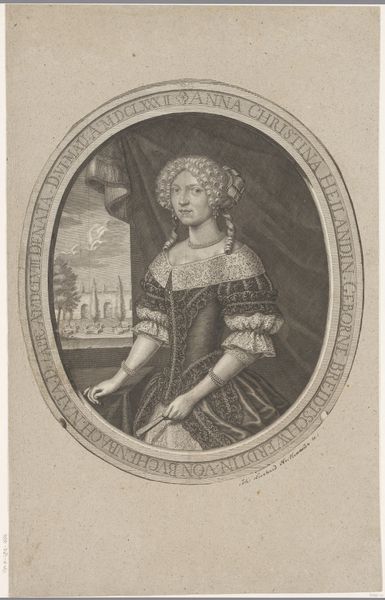
print, intaglio, engraving
#
portrait
#
baroque
# print
#
intaglio
#
form
#
engraving
Dimensions: height 243 mm, width 186 mm
Copyright: Rijks Museum: Open Domain
Curator: This intaglio print, dating possibly from 1630 to 1646, is titled "Portret van Geneviève d'Urfée," made by Pieter de Jode I. It resides here at the Rijksmuseum. Editor: There's a sombre quality here, a weightiness. Look at the textures conjured in monochrome. Even the air seems heavy around her. Curator: Observe the compositional elements. The portrait adheres to a clear visual hierarchy: Geneviève is centered, her gaze direct. Her status is communicated via the ornate detail in her clothes and jewellery, meticulously rendered. Editor: And what craft went into these garments? Notice the billowing sleeves and the heavy drape of the fabric - likely expensive silk. I imagine someone labouring over such fine needlework. The print belies its own history of production; the very act of producing and consuming portraiture such as this reveals rigid social strata. Curator: You’ve articulated an essential point. One can deconstruct her attire to unveil a lexicon of symbolic meanings encoded into each material detail. Pearls signify purity, for instance, aligning the sitter within certain socio-religious discourses. Editor: But what about the social realities for those who mined the pearls? Or produced her lace collar? Surely that labour and those human connections were significant material parts of the art? Curator: Undoubtedly, and the engraving technique, involving laborious work with burins and plates, results in these stark contrasts so redolent of Baroque sensibilities. Consider, furthermore, the geometric rigor implicit within its formal design structure; its arrangement offers a clear window into aristocratic idealism. Editor: I still find myself dwelling on the physicality. The paper, the ink, the press that made numerous copies. And what would it have cost, in time and resources, to disseminate these images and project power through material form? It all seems tied up in systems of value. Curator: A vital point. When reading this piece, it must be recognized that art is both product and process. Both intersect here to inform, perhaps, not merely the aristocracy's idealism but its pragmatic materiality too. Editor: It provides a complex, enduring artifact through which we can read power. Curator: Indeed, and power is written in the visual and material language on the page.
Comments
No comments
Be the first to comment and join the conversation on the ultimate creative platform.
